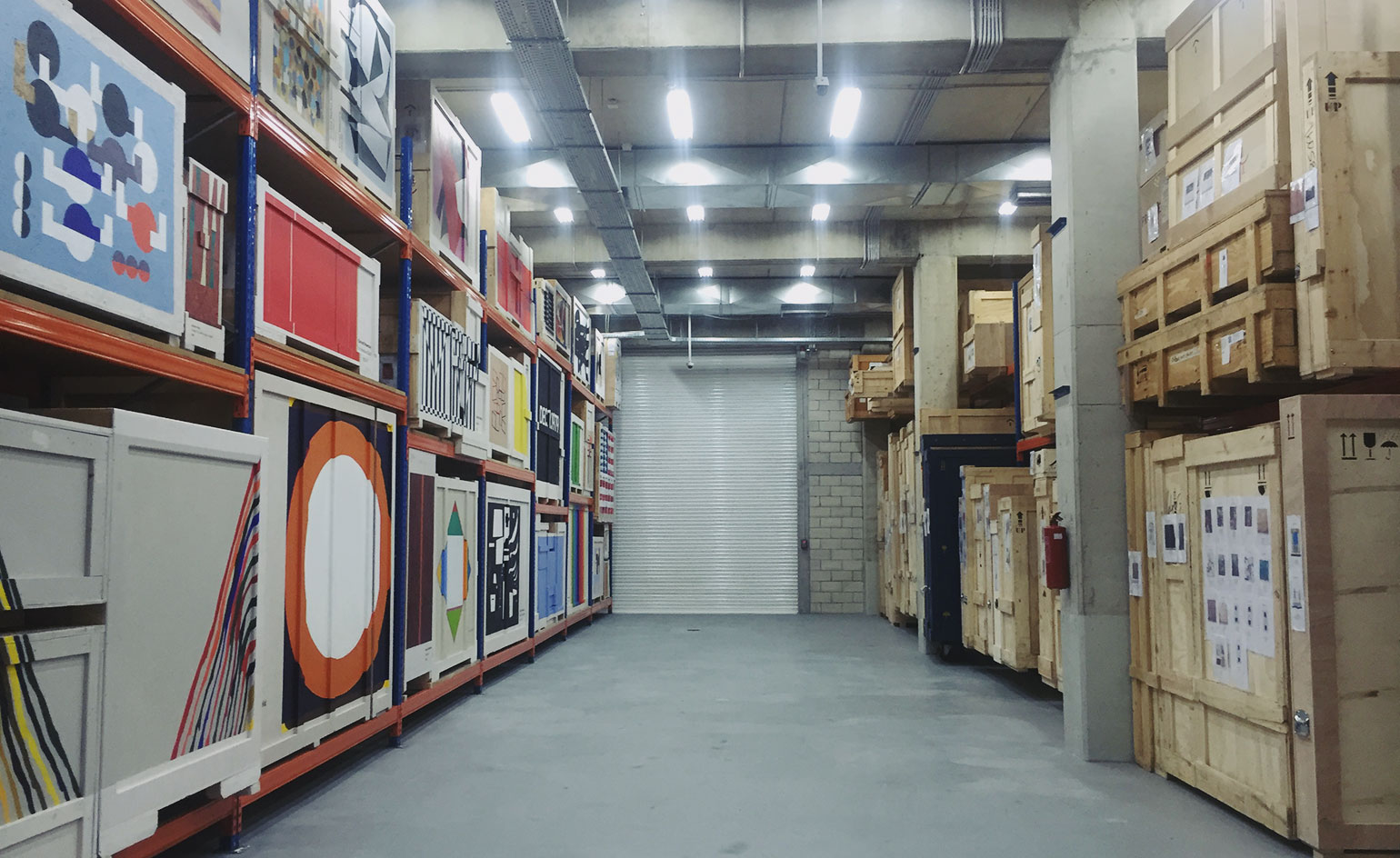
Beirut’s Aïshti Foundation, housing the private art collection of Lebanese art collectors and retail magnates Tony and Elham Salamé, was unveiled on 25 October to much fanfare.
Revelers at the opening festivities were offered the opportunity to explore its storage facility – and not because of lax security measures. Rather, it was an invitation to discover a project by artists Suha Traboulsi and Walid Raad, nestled among more conventional racks, pallets and crates.
Titled ‘Postscript to the Arabic translation’, Trabousi and Raad’s installation replicates an impressive roster of 20th century paintings on the sides of wooden crates. An On Kawara date painting is seen next to Ellsworth Kelly’s curved-edge Yellow Piece, whereas an illusion-inducing Carmen Herrera sits atop a Barnett Newman zip. In the corner, a sizable star-spangled banner a la Jasper Johns hovers over smaller, but equally recognisable homages to Lucio Fontana and Alfred Jensen.
When we last spoke with Tony Salamé (see W*200), he'd mentioned that these were artworks that he dreamed of owning. The exhibition captions, however reveal a more complex story. As it turns out, the authentic versions of these paintings had indeed belonged to the same collection – put together between 1952 and 1974, and intended to anchor a new national Museum for Modern Art (planned for May 1975). The onset of civil war prevented this museum from ever opening, but the paintings remained in Beirut, stashed in the Ministry of Culture’s central depot.
In the subsequent 30 years, corrupt political figures dipped into this collection over and over, and took valuable works as ‘gifts’ for themselves, their relatives and cronies.
The Palestinian-born Traboulsi, who had started her career as a minimalist painter, served as the ministry’s Chief Registrar of Public Collections from 1956 to 1981. Unable to stop the brutal looting of artworks that had been consigned to her care, she memorialised 154 ‘gifted’ works by painting replicas on crates.
While original crates are no longer in existence, 37 of them have now been reproduced at Raad’s behest, to serve as a potent tribute to a desecrated cultural landscape.
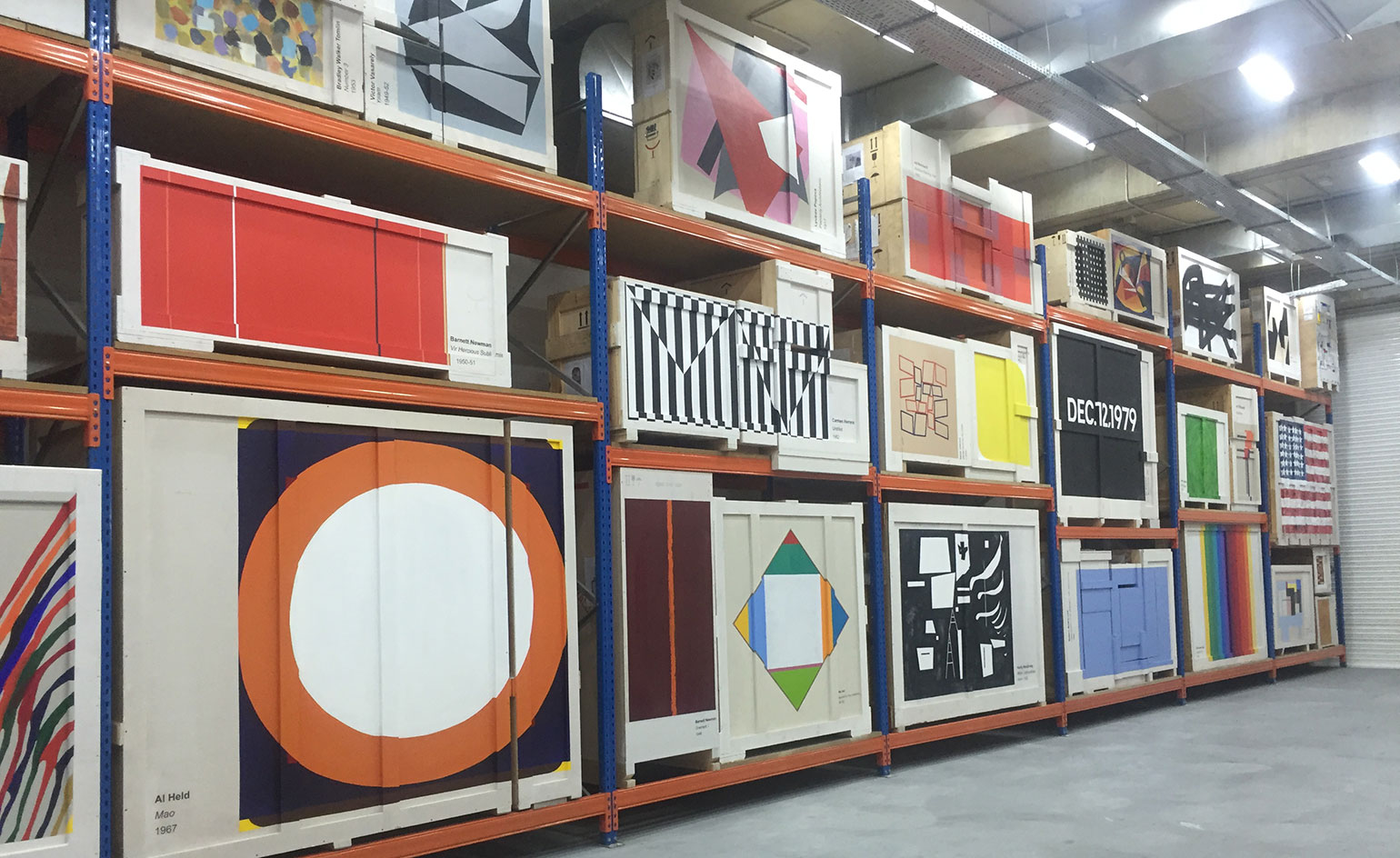
Trabousi and Raad’s installation replicates 37 twentieth-century paintings that had been stolen from the Lebanese Ministry of Culture by corrupt government officials
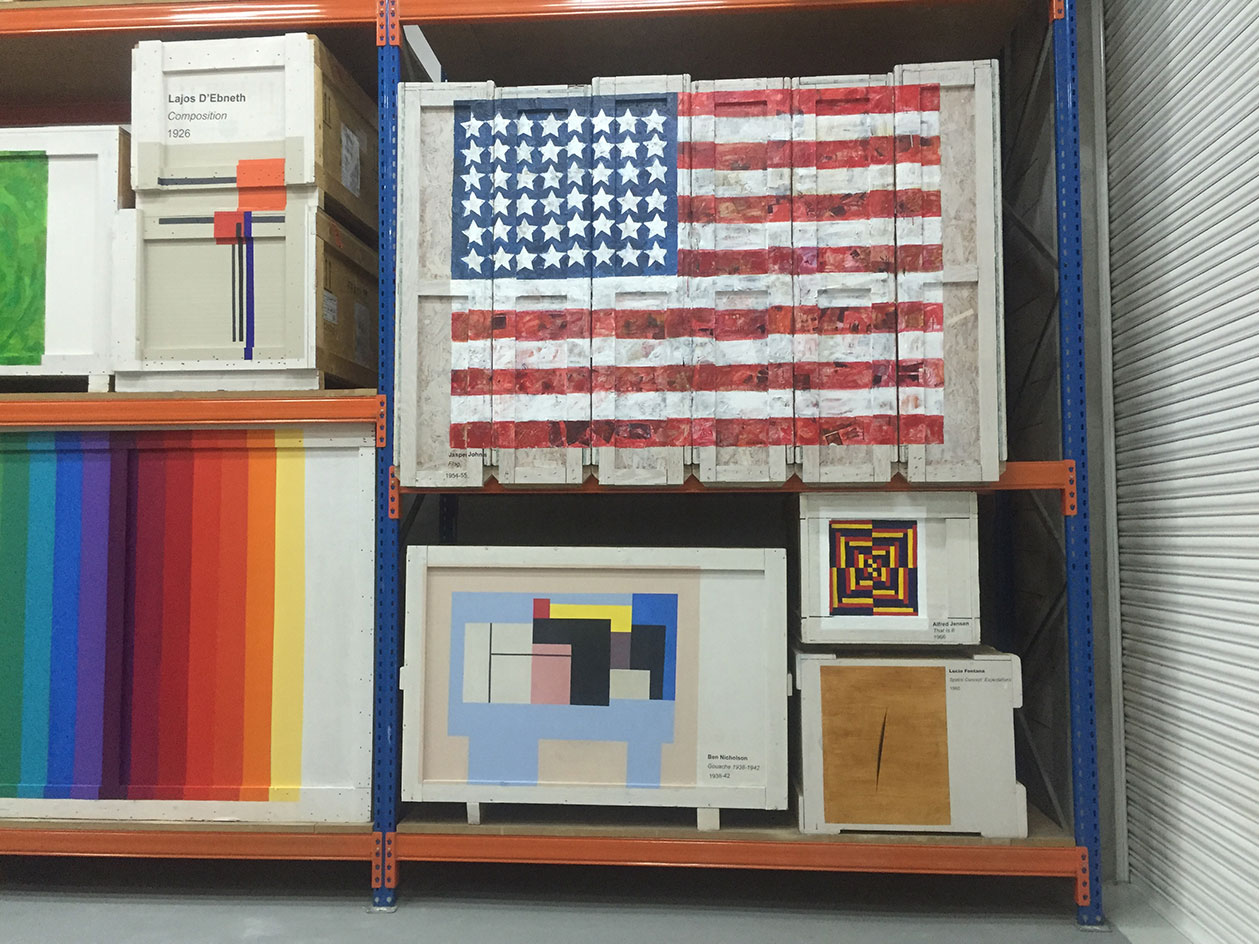
In the corner, a sizable star-spangled banner a la Jasper Johns hovers over smaller, but equally recognisable homages to Lucio Fontana and Alfred Jensen
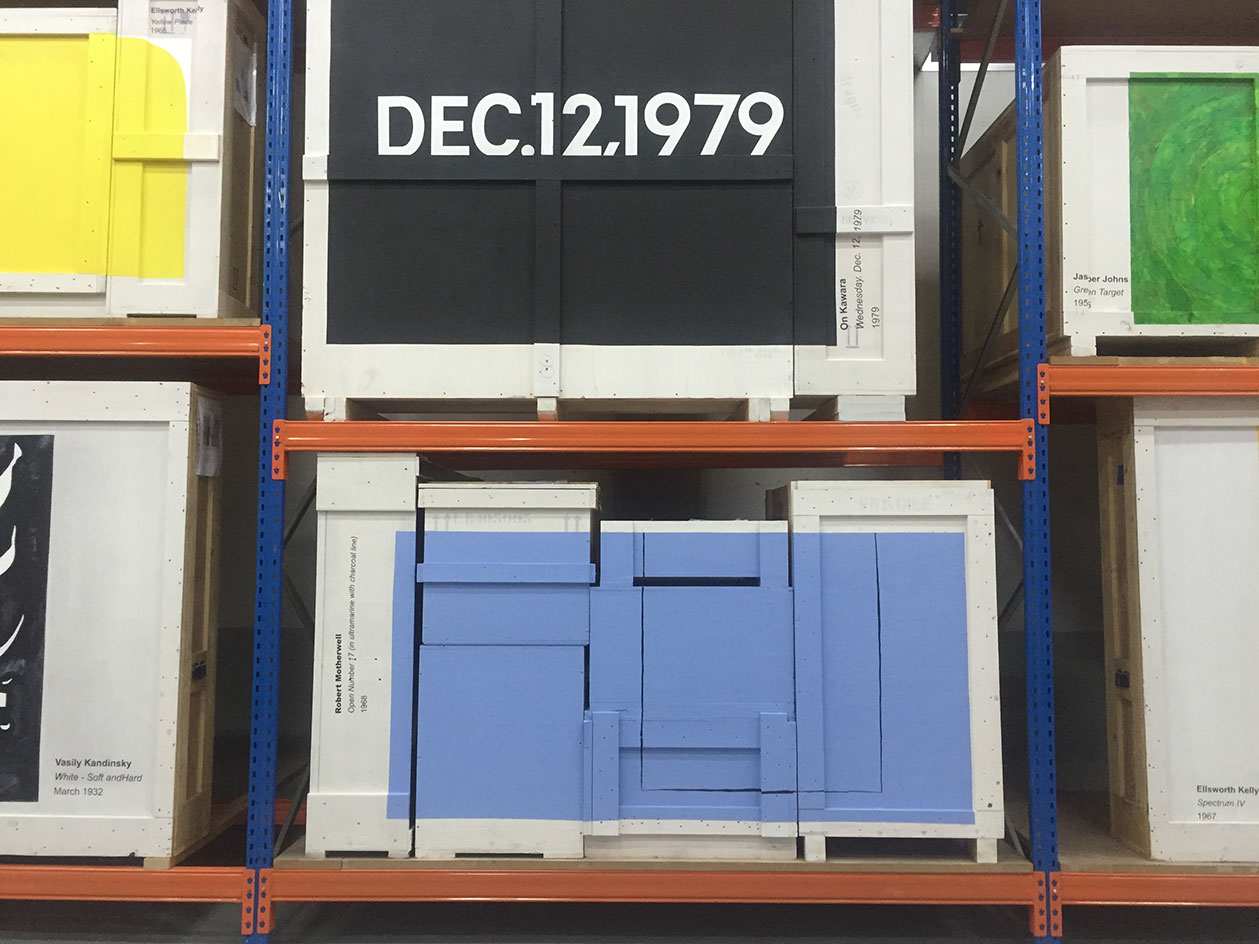
A replica of an On Kawara date painting sits atop that of a charcoal lined Robert Motherwell
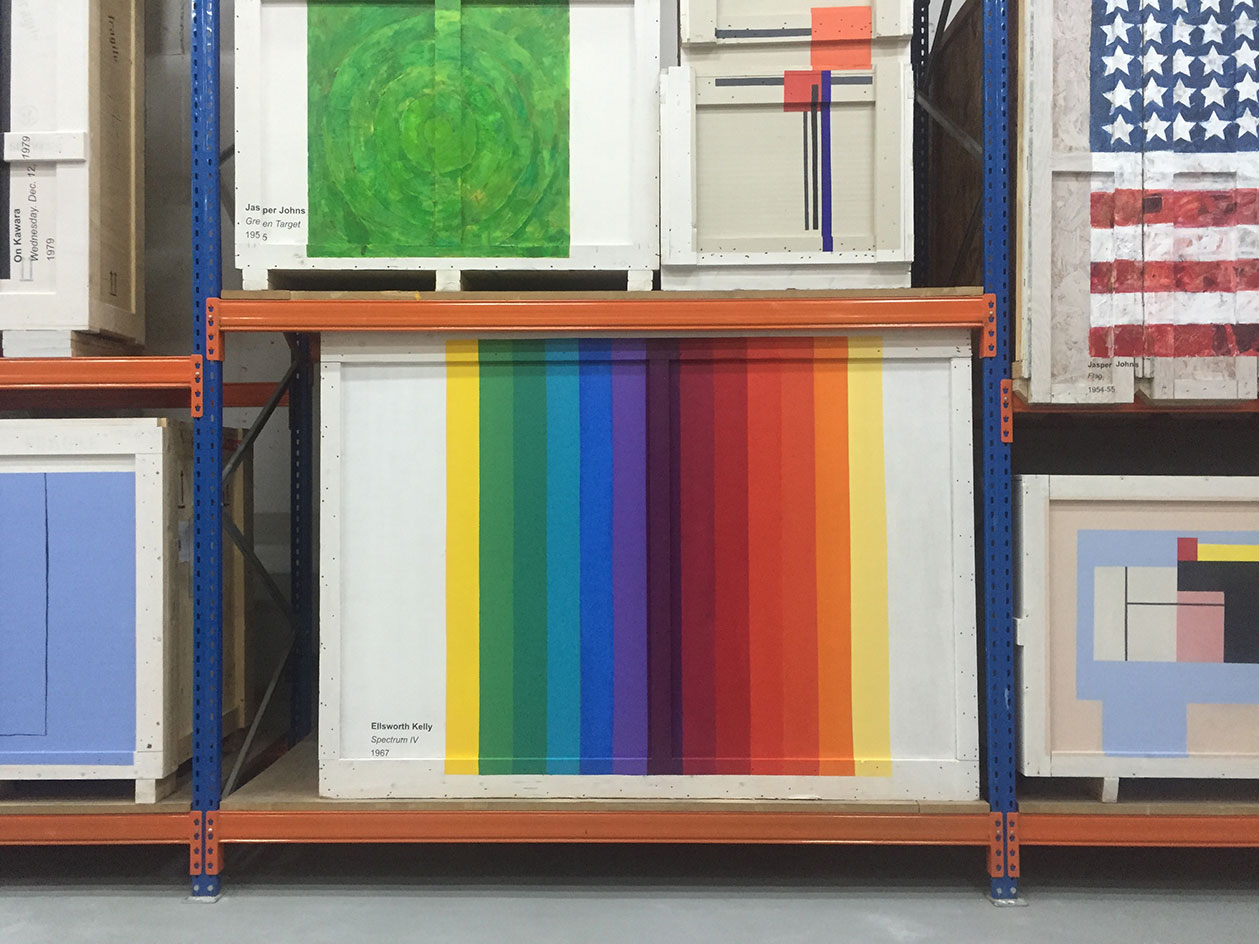
Traboulsi and Raad juxtaposed another monochrome Jasper Johns with an Ellsworth Kelly that bursts characteristically with colour
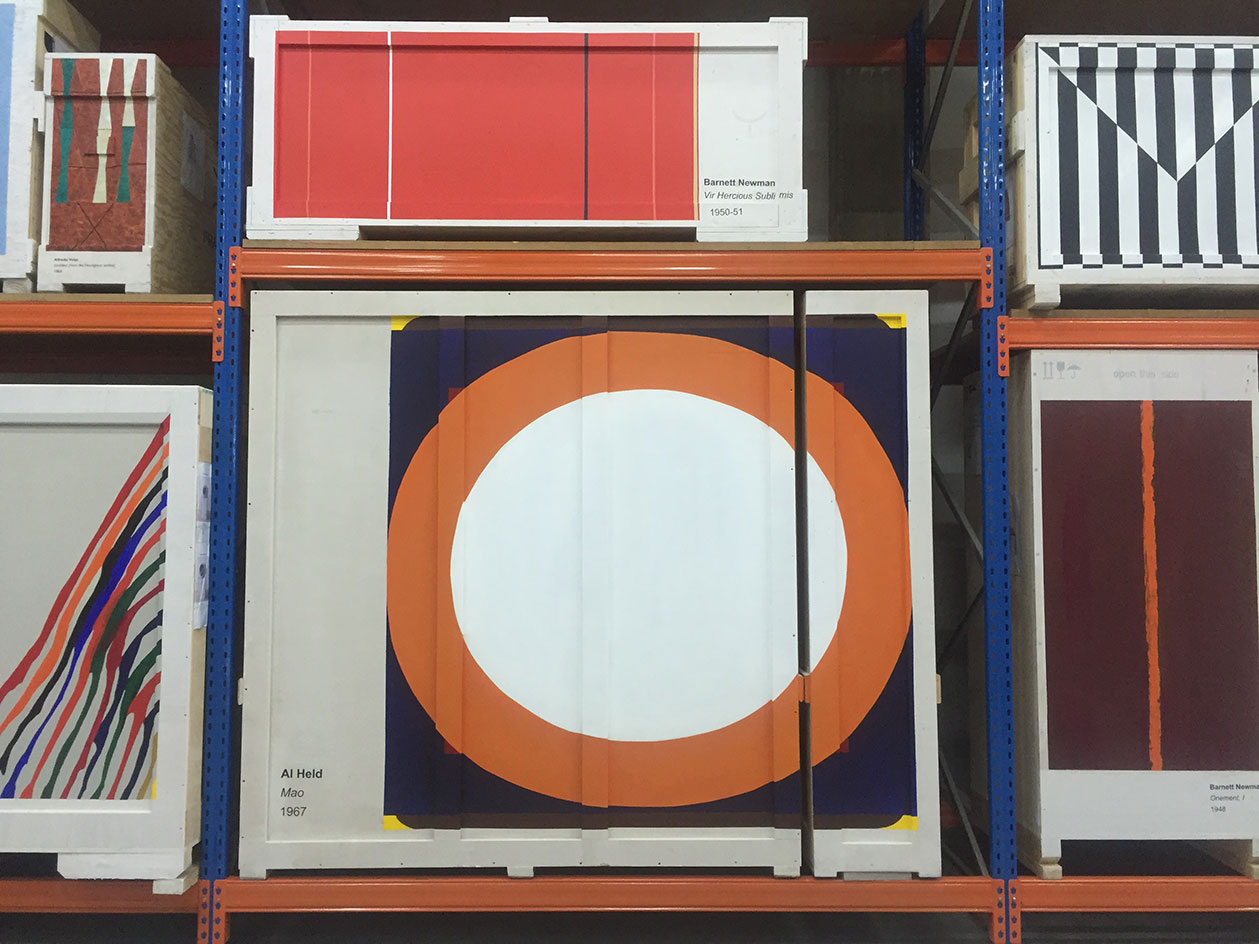
A wealth of minimalist works are depicted in the installation, among them two Barnett Newmans (top and bottom right) and an Al Held (centre)
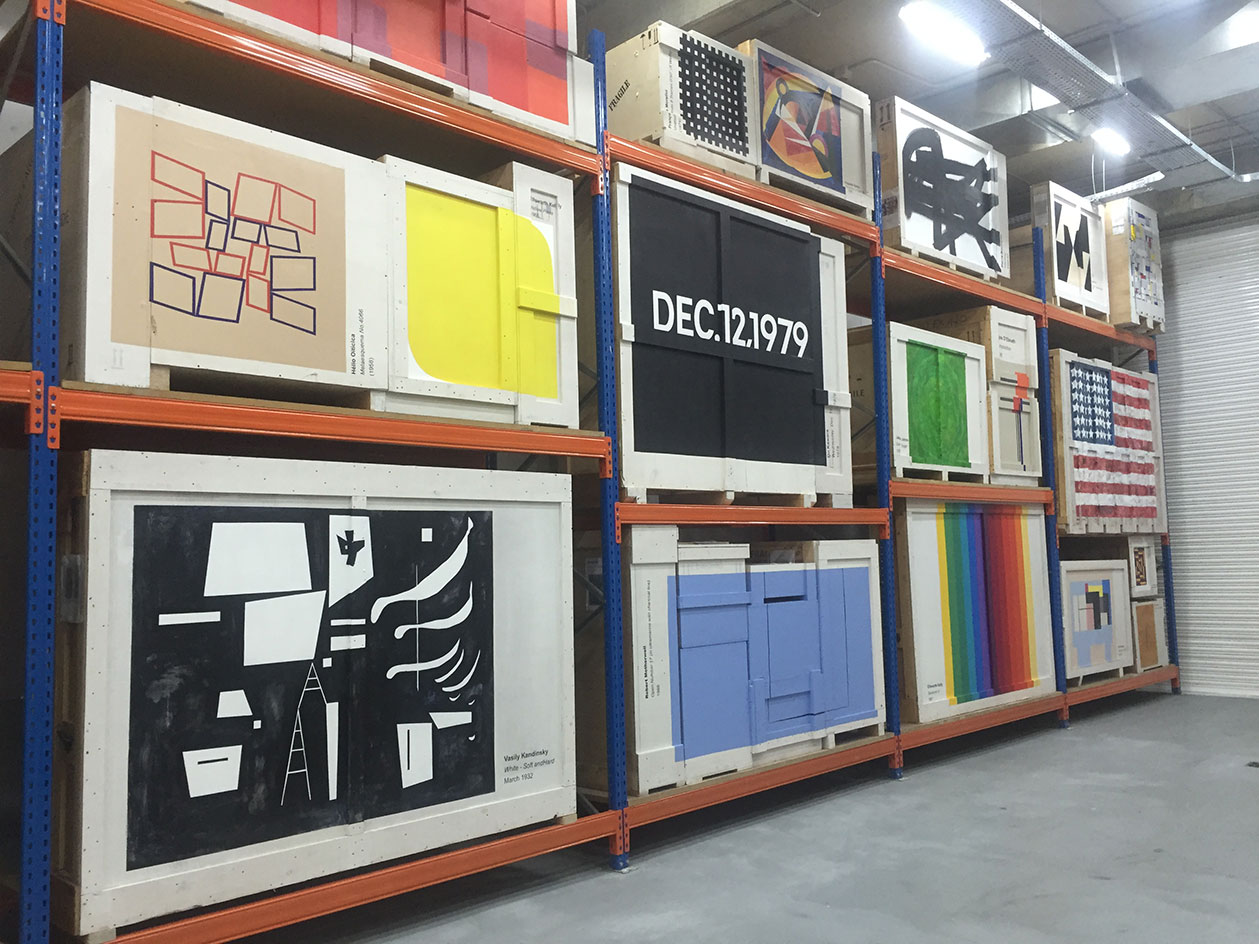
Collectively, the replicated art works serve as a potent tribute to a desecrated cultural landscape
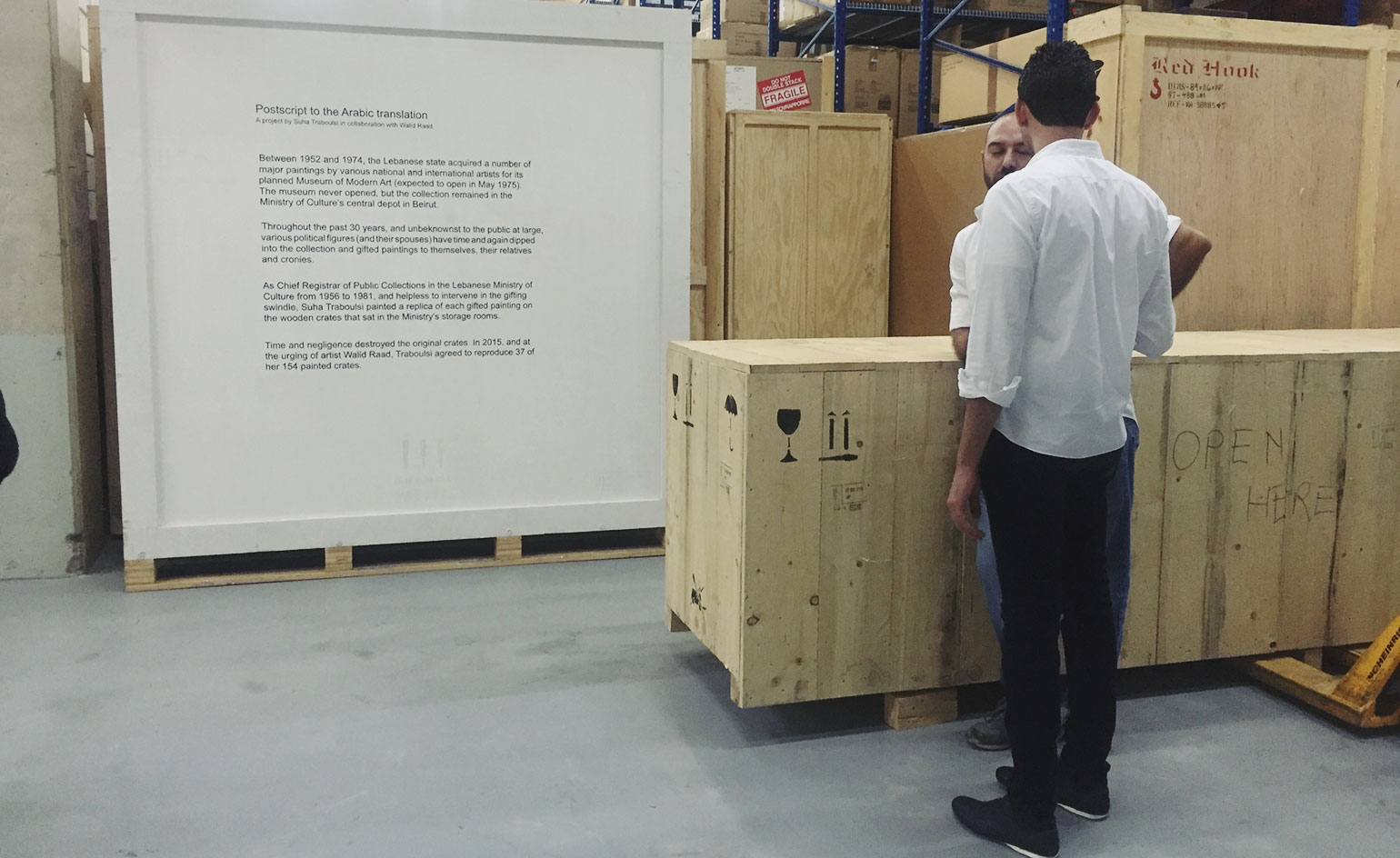
True to the format of Trabousi and Raad’s installation, the full story behind the stolen art works is explained on the side of another storage crate
INFORMATION
Photography: Antonio Camera
ADDRESS
Aïshti Foundation
Jal El Dib, Lebanon
Receive our daily digest of inspiration, escapism and design stories from around the world direct to your inbox.
TF Chan is a former editor of Wallpaper* (2020-23), where he was responsible for the monthly print magazine, planning, commissioning, editing and writing long-lead content across all pillars. He also played a leading role in multi-channel editorial franchises, such as Wallpaper’s annual Design Awards, Guest Editor takeovers and Next Generation series. He aims to create world-class, visually-driven content while championing diversity, international representation and social impact. TF joined Wallpaper* as an intern in January 2013, and served as its commissioning editor from 2017-20, winning a 30 under 30 New Talent Award from the Professional Publishers’ Association. Born and raised in Hong Kong, he holds an undergraduate degree in history from Princeton University.
-
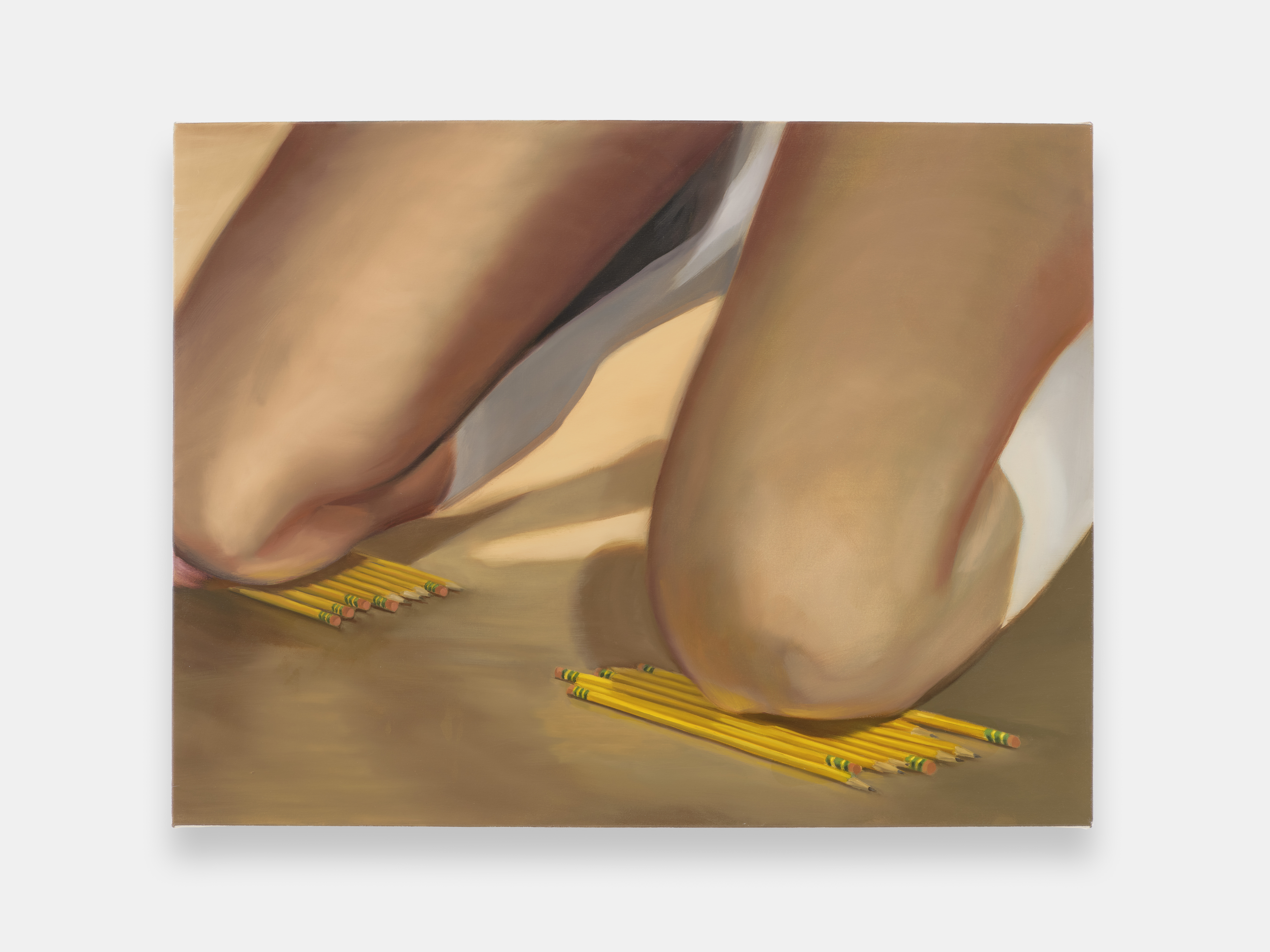 ‘I want to bring anxiety to the surface': Shannon Cartier Lucy on her unsettling works
‘I want to bring anxiety to the surface': Shannon Cartier Lucy on her unsettling worksIn an exhibition at Soft Opening, London, Shannon Cartier Lucy revisits childhood memories
-
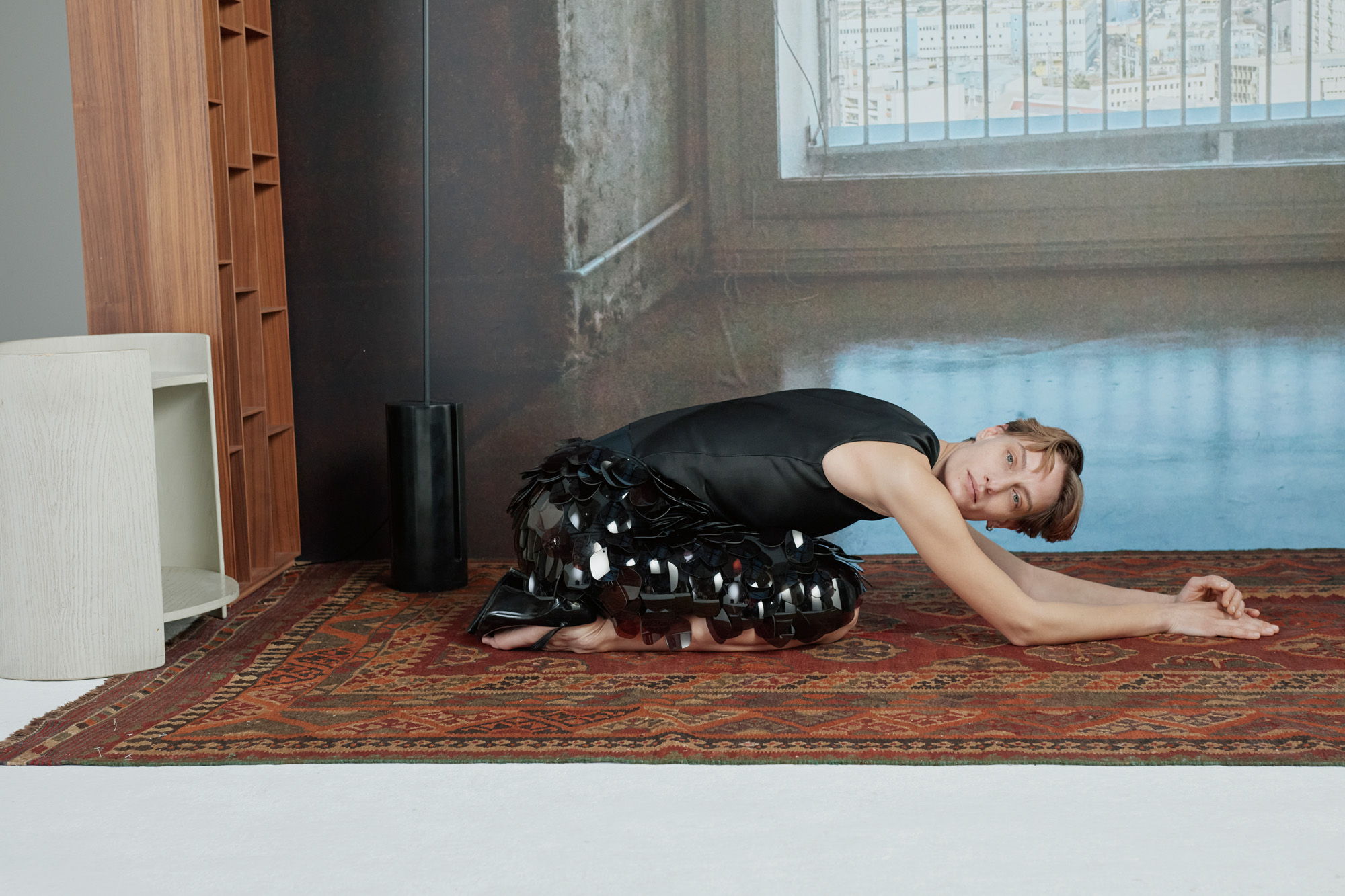 What one writer learnt in 2025 through exploring the ‘intimate, familiar’ wardrobes of ten friends
What one writer learnt in 2025 through exploring the ‘intimate, familiar’ wardrobes of ten friendsInspired by artist Sophie Calle, Colleen Kelsey’s ‘Wearing It Out’ sees the writer ask ten friends to tell the stories behind their most precious garments – from a wedding dress ordered on a whim to a pair of Prada Mary Janes
-
 Year in review: 2025’s top ten cars chosen by transport editor Jonathan Bell
Year in review: 2025’s top ten cars chosen by transport editor Jonathan BellWhat were our chosen conveyances in 2025? These ten cars impressed, either through their look and feel, style, sophistication or all-round practicality
-
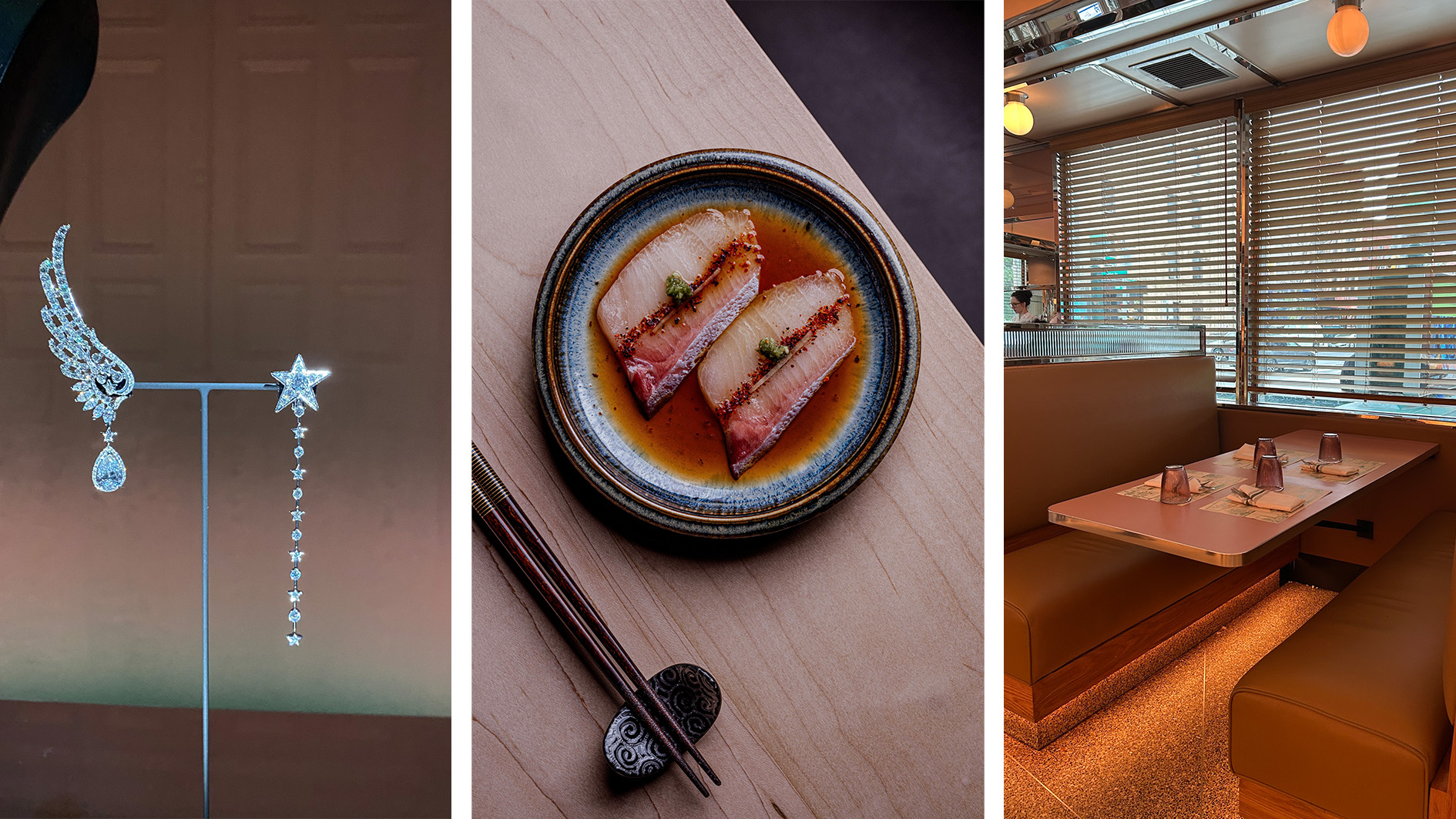 Out of office: the Wallpaper* editors’ picks of the week
Out of office: the Wallpaper* editors’ picks of the weekIt was a jam-packed week for the Wallpaper* staff, entailing furniture, tech and music launches and lots of good food – from afternoon tea to omakase
-
 Mark Ronson and Raye team up on jazzy summer anthem, 'Suzanne'
Mark Ronson and Raye team up on jazzy summer anthem, 'Suzanne'The collaboration marks 150 years of Audemars Piguet
-
 Remote Antarctica research base now houses a striking new art installation
Remote Antarctica research base now houses a striking new art installationIn Antarctica, Kyiv-based architecture studio Balbek Bureau has unveiled ‘Home. Memories’, a poignant art installation at the remote, penguin-inhabited Vernadsky Research Base
-
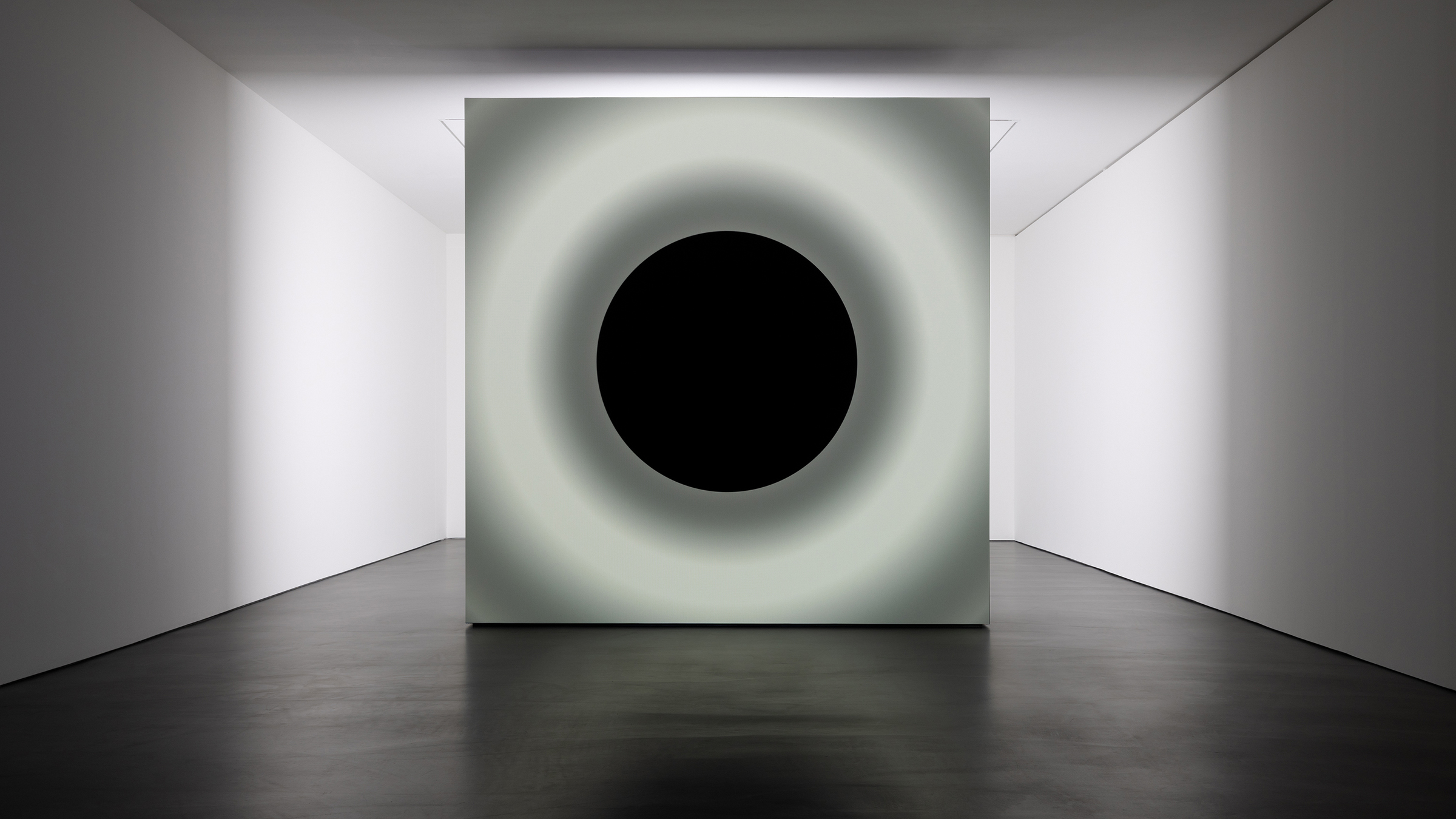 Ryoji Ikeda and Grönlund-Nisunen saturate Berlin gallery in sound, vision and visceral sensation
Ryoji Ikeda and Grönlund-Nisunen saturate Berlin gallery in sound, vision and visceral sensationAt Esther Schipper gallery Berlin, artists Ryoji Ikeda and Grönlund-Nisunen draw on the elemental forces of sound and light in a meditative and disorienting joint exhibition
-
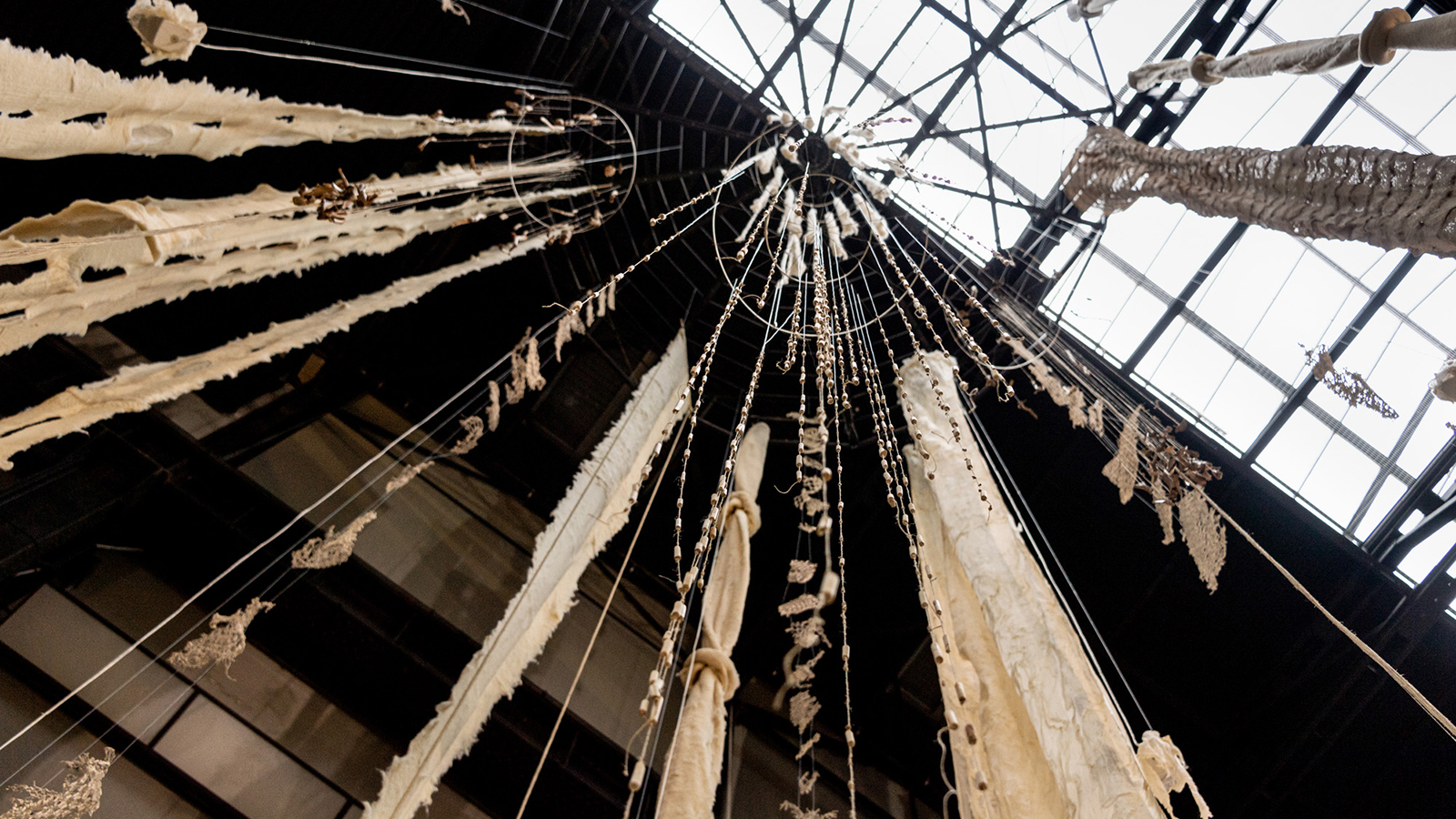 Cecilia Vicuña’s ‘Brain Forest Quipu’ wins Best Art Installation in the 2023 Wallpaper* Design Awards
Cecilia Vicuña’s ‘Brain Forest Quipu’ wins Best Art Installation in the 2023 Wallpaper* Design AwardsBrain Forest Quipu, Cecilia Vicuña's Hyundai Commission at Tate Modern, has been crowned 'Best Art Installation' in the 2023 Wallpaper* Design Awards
-
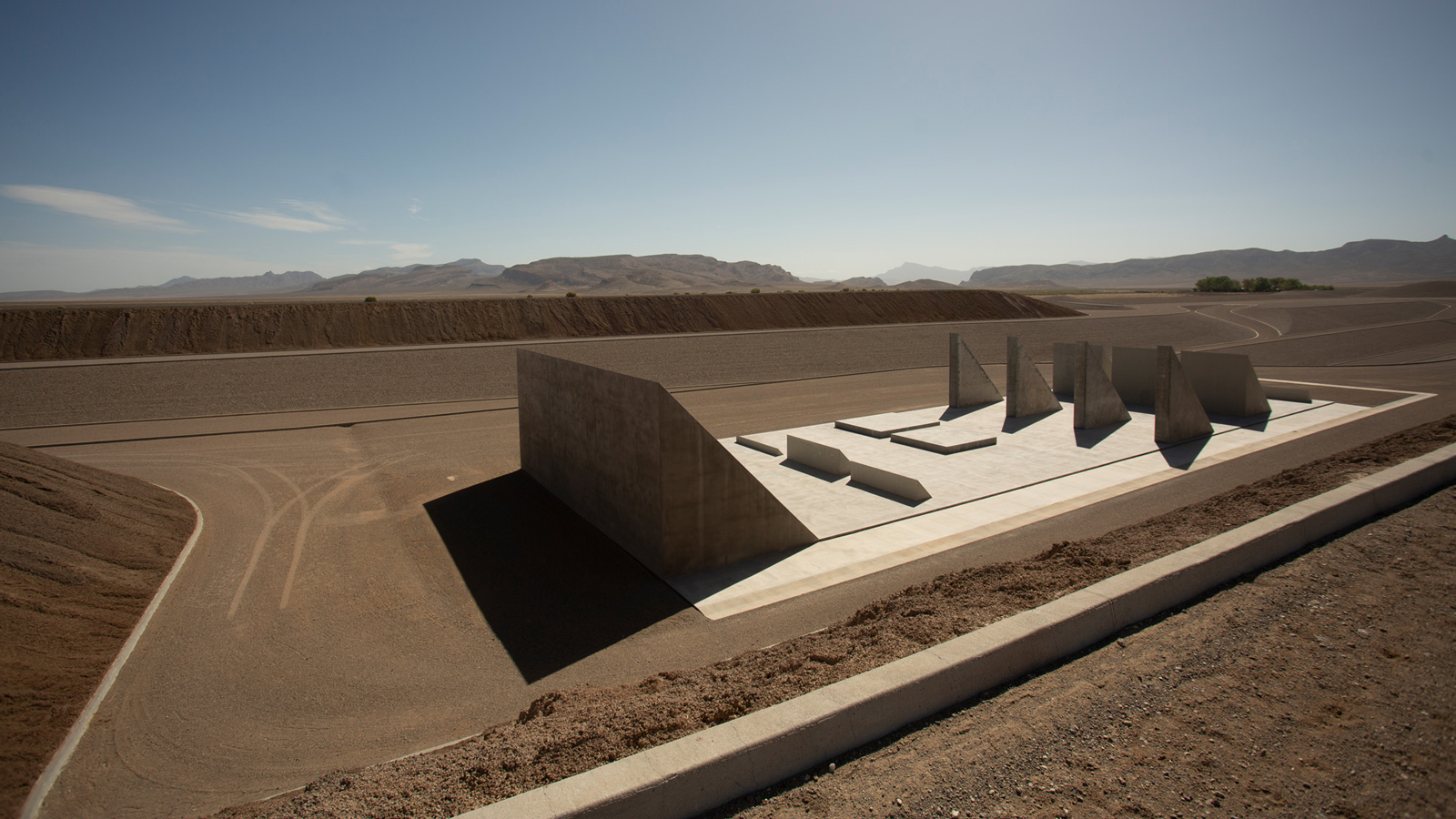 Michael Heizer’s Nevada ‘City’: the land art masterpiece that took 50 years to conceive
Michael Heizer’s Nevada ‘City’: the land art masterpiece that took 50 years to conceiveMichael Heizer’s City in the Nevada Desert (1972-2022) has been awarded ‘Best eighth wonder’ in the 2023 Wallpaper* design awards. We explore how this staggering example of land art came to be
-
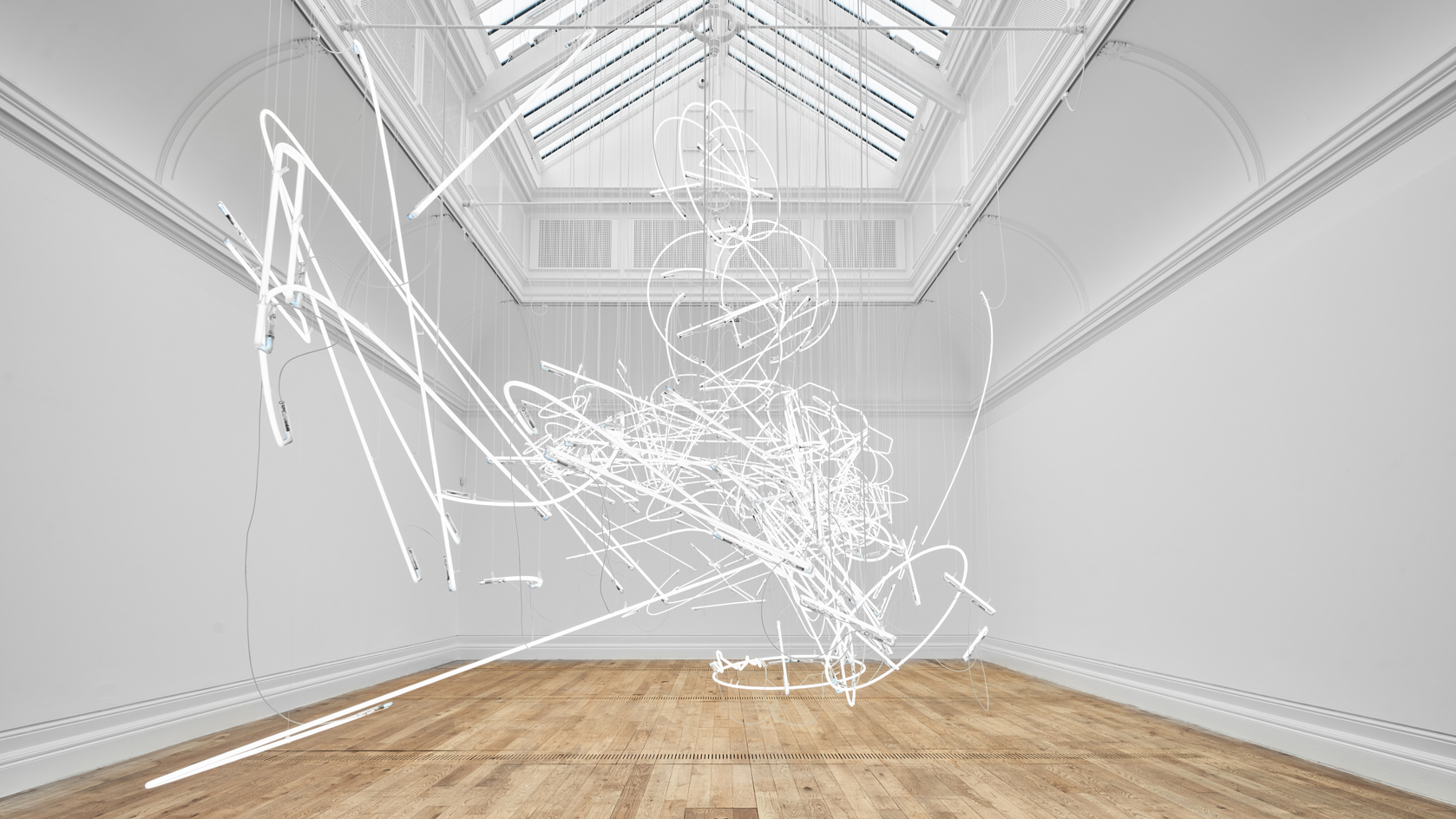 Cerith Wyn Evans: ‘I love nothing more than neon in direct sunlight. It’s heartbreakingly beautiful’
Cerith Wyn Evans: ‘I love nothing more than neon in direct sunlight. It’s heartbreakingly beautiful’Cerith Wyn Evans reflects on his largest show in the UK to date, at Mostyn, Wales – a multisensory, neon-charged fantasia of mind, body and language
-
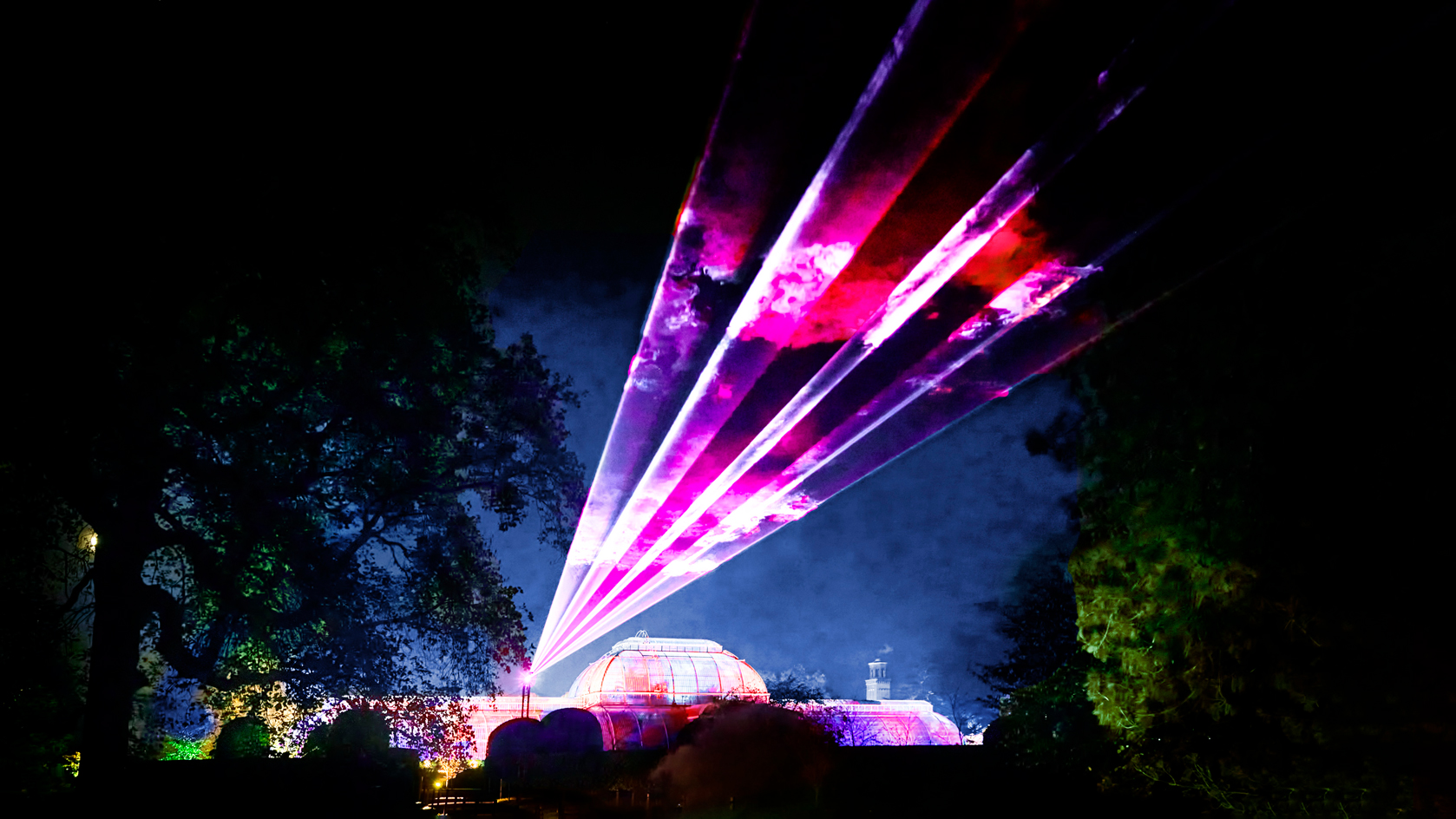 The best 7 Christmas installations in London for art lovers
The best 7 Christmas installations in London for art loversAs London decks its halls for the festive season, explore our pick of the best Christmas installations for the art-, design- and fashion-minded